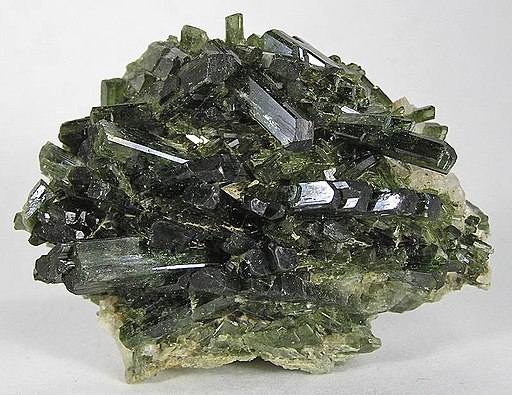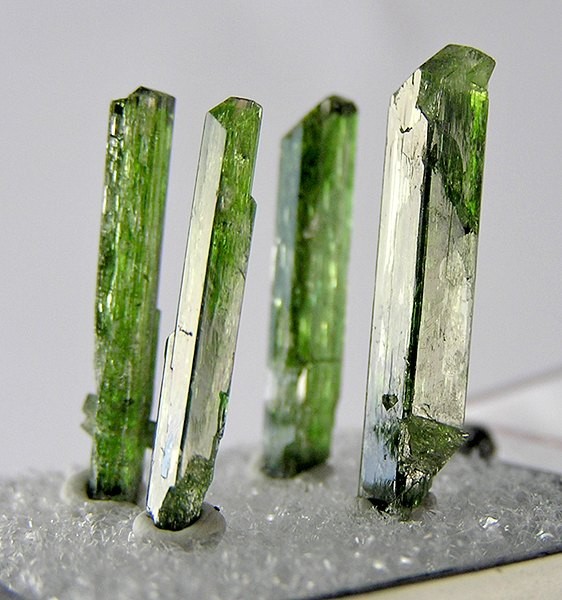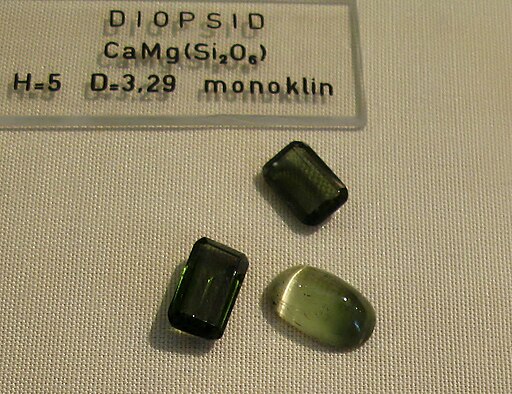Diopside
Diopside is a mineral that most people think is green – however, it can occur in various colours.
The most popular for collectors and jewellers is Chrome Diopside, which forms dark green and often clear crystals – however, there are other varieties!
Showing all 4 results
-

Chrome Diopside from Gusdal Olivine Pit, Norway
£5.00 -
New

Diopside and Hessonite from Ala Valley, Italy
£20.00 -
New

Diopside and Shattuckite from Van der Plas Mine, Namibia
£10.00 -

Diopside Crystal Specimens (Chrome)
£1.00 – £2.00
Appearance, Uses and History
Diopside is a common mineral often found in igneous and metamorphic rocks around the world.
It sometimes occurs around Diamonds and is often used for ‘trail to lode’ prospecting as a method to discover Diamond deposits.
It is also used as a gemstone in high quality grades – cut en cabochon or faceted for jewellery use. Grainy or granular pieces are often polished or tumbled.
Locales
Diopside is found all around the world, with excellent sources in Afghanistan, Austria, Brazil, Canada, China, Finland, India, Italy, Japan, Madagascar, Norway, Pakistan, Russia, Tanzania, and the USA.
Mineralogy
Most commonly light and dark green, but in some cases, Diopside can be black, blue, brown, clear, grey, violet. There are two gem varieties of Diopside.
- Chrome Diopside is a very popular rich green variation, found in Russia and often faceted for jewellery usage.
- Black Star Diopside is a form of Diopside showing asterism, an optical effect causing a four pointed star.
Photos of Diopside
Hazards and Warnings
Almost all rocks, minerals (and, frankly, almost all other substances on earth) can produce toxic dust when cutting, which can cause serious respiratory conditions including silicosis.
When cutting or polishing rocks, minerals, shells, etc, all work should be done wet to minimise the dust, and a suitable respirator or extraction system should be used.
Translations
Arabic:
- ديوبسيد
Hindi:
Portuguese:
- diopsídio
Bengali:
Indonesian:
Punjabi:
English:
Italian:
Russian:
- диопсид
French:
Japanese:
Spanish:
- diópsido
German:
- Diopsid
Korean:
- 디옵 사이드
Thai:
Gujurati:
- ડાયપોસાઇડ
Mandarin and Traditional Chinese:
- 透辉石
Urdu:









